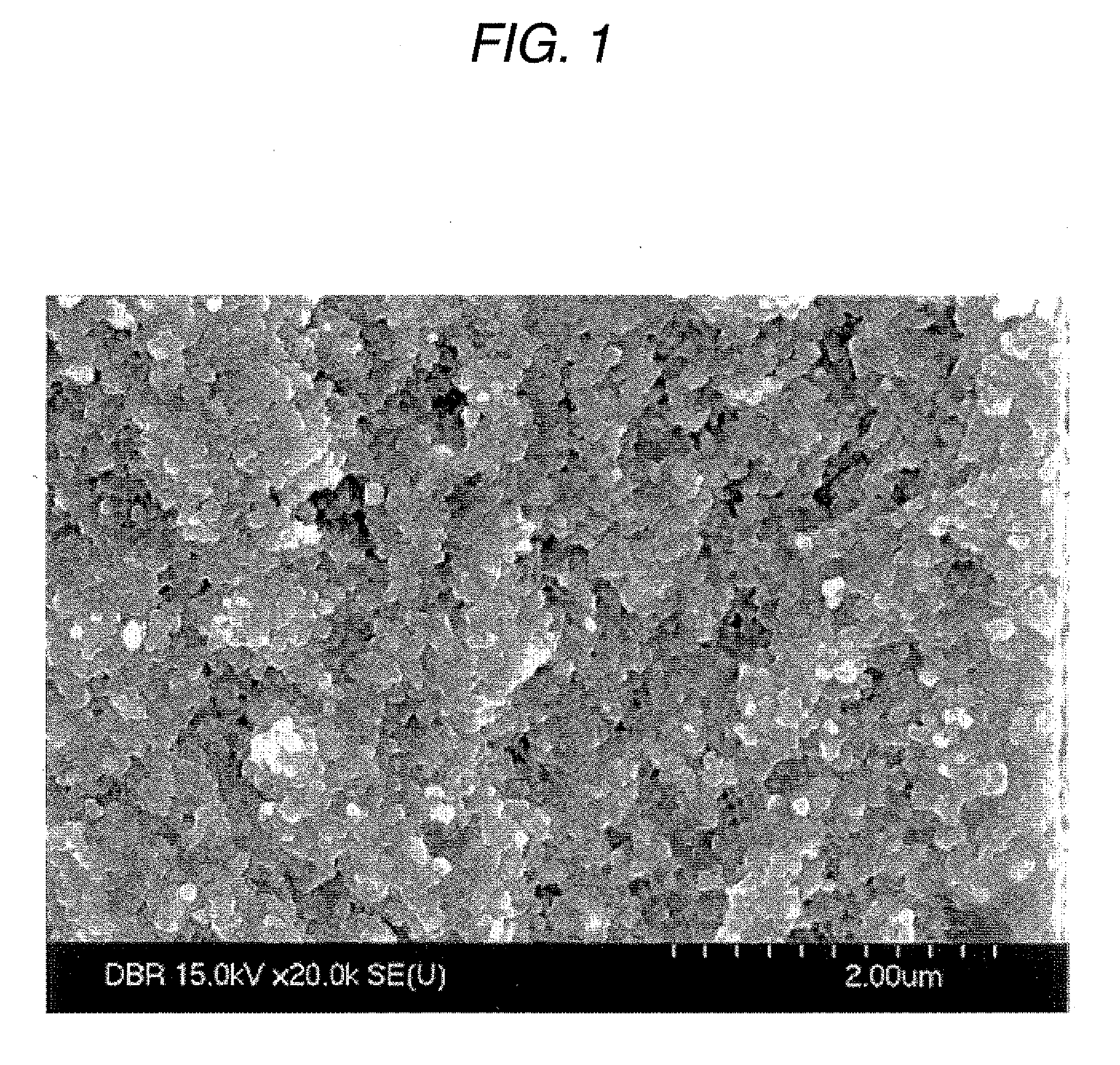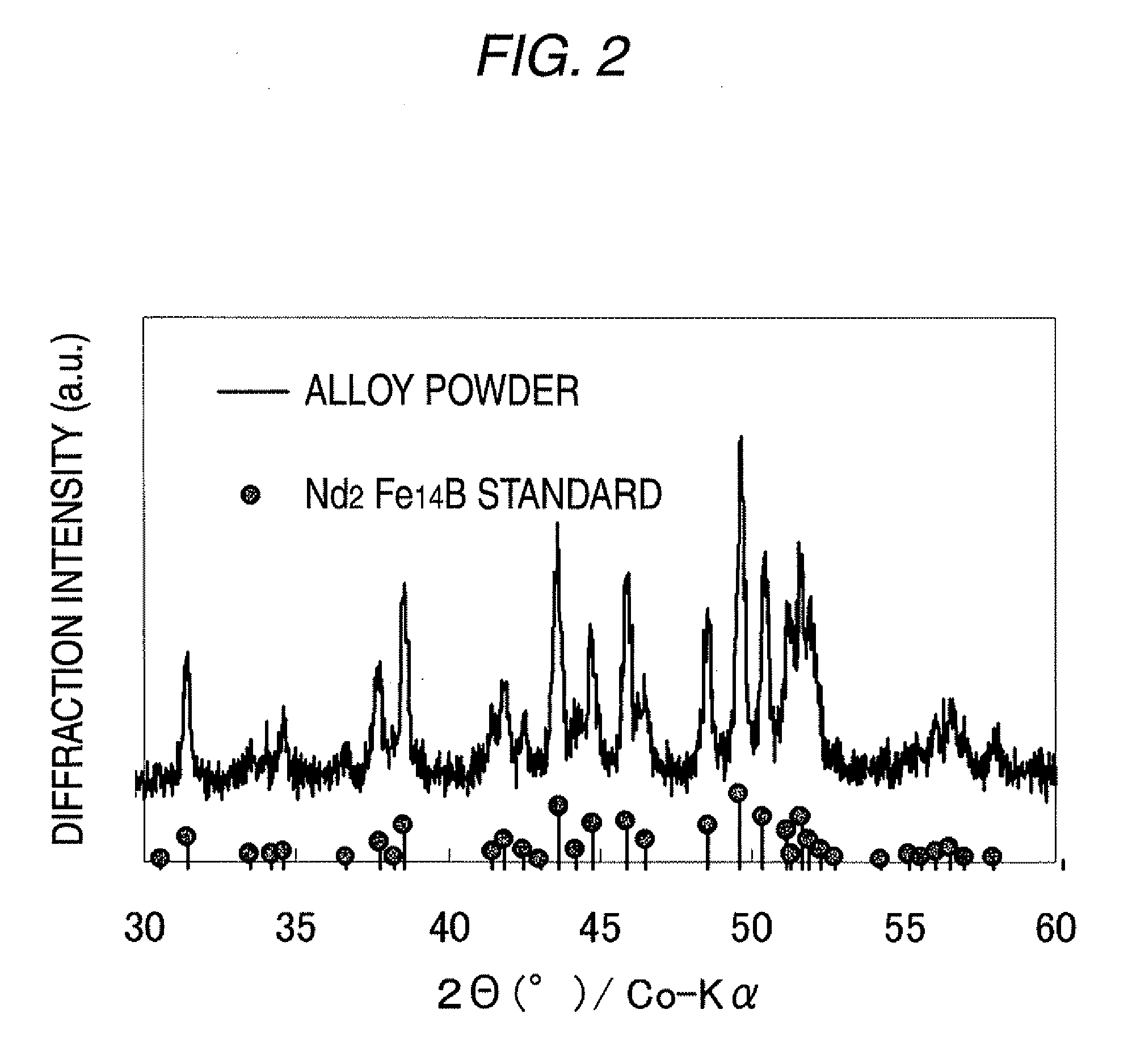Rare earth magnet and production process thereof
a technology production processes, applied in the field of rare earth magnets, can solve the problems of reducing remanence, affecting the stability of magnetic domains, and conventional techniques, and achieve the effects of preventing coarsening, reducing remanence, and suppressing the substitution of elements rh
- Summary
- Abstract
- Description
- Claims
- Application Information
AI Technical Summary
Benefits of technology
Problems solved by technology
Method used
Image
Examples
examples
[0121]The present invention is described in greater detail below by referring to Examples.
experiment 1
1. Experiment 1
(Preparation of Raw Material Powder)
[0122]A rare earth alloy having a component composition of, in terms of mass %, 30% Nd-2% Co-1% B-bal. Fe was melted at 1,350° C., and the melt was projected from an orifice on a Cu-made rotating roll plated with Cr (rotating roll peripheral velocity: 20 m / sec) to obtain a rapid-quenched alloy flake. This rapid-quenched alloy flake was pulverized by a cutter mill and sieved to produce a rare earth alloy powder having a maximum particle diameter of 350 μm or less (hereinafter, sometimes referred to as “Rare Earth Alloy Powder A”). The fracture surface of Rare Earth Alloy Powder A was observed using a Scanning electron microscope (SEM) at a magnification of 20,000. As a result, as shown in FIG. 1, it was confirmed that Rare Earth Alloy Powder A is composed of fine grains having a size of about 0.1 μm. In addition, according to the X-ray diffraction measurement using Kα-ray source of Co, it was confirmed that these grains are Nd2(Fe,Co...
experiment 2
2. Experiment 2
(Heat Treatment)
[0142]With respect to the rare earth magnets of Examples 1 and 4 produced in Experiment 1 (Example 1: the mixing amount of Dy metal powder is 0.3 mass %; Example 4: the mixing amount of 85Dy-15Cu alloy powder is 0.3 mass %), the arced magnet piece was loaded into a vacuum heat treatment furnace and heat-treated at 500 to 1,000° C. for 30 minutes in an Ar atmosphere. Then, the grain size and magnetic characteristics were measured in the same manner as in Experiment 1. In this regard, Example 15 after the heat treatment was observed using a scanning electron microscopy (SEM) in the same manner as Example 5. As a result, a microstructure including a lot of plate-like grains and a grain boundary phase surrounding the peripheries thereof was observed. In addition, as a result of measurement using a transmission electron microscopy (TEM), it was confirmed that diffusion of element Dy into the grain boundary phase is promoted in Example 15 in comparison with ...
PUM
| Property | Measurement | Unit |
|---|---|---|
| Grain size | aaaaa | aaaaa |
| Temperature | aaaaa | aaaaa |
| Fraction | aaaaa | aaaaa |
Abstract
Description
Claims
Application Information
 Login to View More
Login to View More - R&D
- Intellectual Property
- Life Sciences
- Materials
- Tech Scout
- Unparalleled Data Quality
- Higher Quality Content
- 60% Fewer Hallucinations
Browse by: Latest US Patents, China's latest patents, Technical Efficacy Thesaurus, Application Domain, Technology Topic, Popular Technical Reports.
© 2025 PatSnap. All rights reserved.Legal|Privacy policy|Modern Slavery Act Transparency Statement|Sitemap|About US| Contact US: help@patsnap.com



